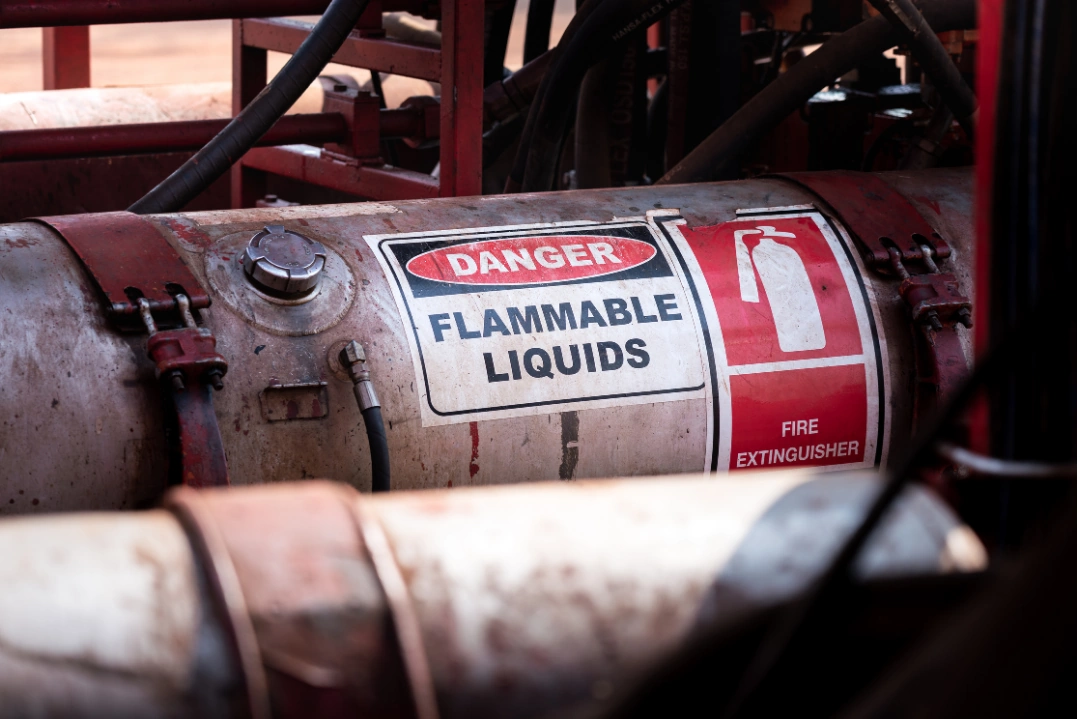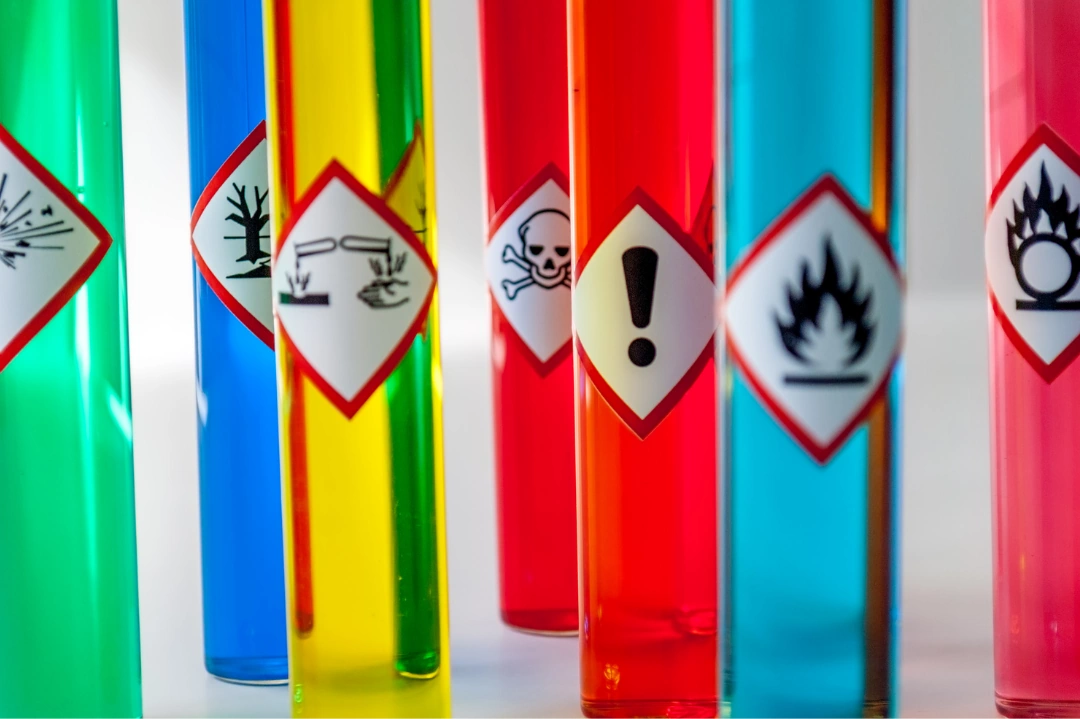
Flammable Liquids In The Workplace: Safety Measures And Recommendations
Many industries use flammable liquids, including construction, maintenance, and manufacturing. While essential to certain tasks, these substances pose major risks when handled improperly. Fires, explosions, and harmful exposure often result from poor storage or lack of training.
Employers of lone workers must take special precautions to manage these hazards. Without immediate backup, a single mistake can have serious consequences. Understanding the risks, following safety protocols, and complying with regulations can reduce accidents, protect workers, and create a safer workplace, no matter how remote or independent the job site.
The Importance Of Flammable Liquid Safety
Flammable liquids can ignite at low temperatures, turning a small mistake into a life-threatening event. Fires caused by these substances spread quickly and can destroy property, injure workers, or even result in fatalities. Lone workers face greater danger because they often operate without immediate assistance in emergencies.
Even minor spills or vapors can create hazardous environments. Ignition sources like static electricity, sparks, or hot surfaces may be present without workers realizing the risk. That makes it critical for employers to reduce exposure, train staff, and implement safeguards.
Focusing on flammable liquid safety protects lives, minimizes property damage, and helps companies avoid the legal and financial consequences of noncompliance. When workers know how to handle these materials responsibly, they create safer job sites and more resilient teams.
Identifying Flammable Liquids In The Workplace
A flammable liquid is any liquid with a flash point below 100°F (37.8°C), meaning it can produce enough vapors to ignite at relatively low temperatures. These substances vary widely by industry and are often found in unexpected places, making proper identification necessary.
Common flammable liquids include:
- ●
Gasoline and diesel fuel
- ●
Acetone and paint thinners
- ●
Alcohol-based cleaners and hand sanitizers
- ●
Solvents used in printing auto repair, or manufacturing
- ●
Adhesives and resins in construction or maintenance
Each of these materials poses specific hazards. Vapors can accumulate in enclosed spaces, and improper handling increases the risk of ignition. Employers must inventory all flammable substances on site, label them clearly, and provide workers with access to updated Safety Data Sheets (SDS). Knowing what’s present is the first step in protecting lone workers from serious harm.
Compliance And Regulatory Standards
Employers must follow established regulations to reduce the risk of flammable liquid incidents and protect lone workers. Regulatory bodies like the Occupational Safety and Health Administration (OSHA) and the National Fire Protection Association (NFPA) set clear standards for handling, storing, and labeling flammable materials.
Key employer responsibilities include:
- ●
Classifying and labeling all flammable liquids accurately
- ●
Providing proper storage areas that meet NFPA standards
- ●
Training workers on hazard communication and emergency response
- ●
Maintaining updated Safety Data Sheets (SDS) for all hazardous materials
- ●
Performing regular safety audits and risk assessments
Compliance protects employees and limits liability. For lone workers, who may not have immediate help nearby, following these regulations becomes even more critical. Employers who meet or exceed regulatory standards create a safer environment and reduce the likelihood of workplace injuries, fires, or chemical exposure.
Safety Protocols For Handling Flammable Liquids
Safe handling of flammable liquids begins with proper training and attention to detail. Workers should always:
- ●
Keep containers tightly sealed when not in use
- ●
Avoid using flammable liquids near open flames, sparks, or heat sources
- ●
Use drip trays and funnels to prevent spills
- ●
Ground and bond containers during transfer to prevent static discharge
Clear labeling and proper storage prevent confusion and accidental misuse. These simple but essential safety protocols reduce the risk of fires, protect lone workers from exposure, and keep worksites compliant and secure.
Personal Protective Equipment (PPE)
Personal protective equipment protects workers from direct contact with flammable liquids and minimizes injury in case of a spill or ignition. Lone workers handling these substances should always wear:
- ●
Flame-resistant clothing
- ●
Chemical-resistant gloves
- ●
Safety goggles or face shields
- ●
Respirators if fumes are present
PPE acts as the first line of defense against skin burns, respiratory damage, and eye injuries. It’s not just about protection during a task—having the right equipment available and worn correctly can save lives when things go wrong. Employers must provide properly fitted PPE, check its condition regularly, and replace worn or damaged gear immediately.
Safe Storage Practices
Proper storage limits the risk of fire, vapor release, and accidental exposure. Employers must use secure, clearly marked containers designed for flammable liquids. These containers should remain sealed when not in use and stored away from ignition sources.
Follow these safe storage practices:
- ●
Use approved safety cans or containers labeled for flammable liquids
- ●
Keep storage areas well-ventilated and temperature-controlled
- ●
Separate flammable liquids from oxidizers, combustibles, and incompatible chemicals
- ●
Store only the quantity needed for the task—avoid unnecessary stockpiling
- ●
Post clear hazard signage and maintain easy access to spill kits and fire extinguishers
Safe storage protects lone workers from hidden hazards and reduces the chance of small issues escalating into emergencies.
Training And Education For Lone Workers
Lone workers handling flammable liquids need more than general safety training. Without team support nearby, they must recognize hazards quickly and respond independently. Focused education helps them act confidently in high-risk situations.
Effective training should cover:
- ●
Identifying flammable liquid hazards
- ●
Understanding labelling and safety data sheets
- ●
Proper handling and storage techniques
- ●
Using personal protective equipment correctly
- ●
Emergency response procedures for spills or fires
Employers should offer regular refreshers and hands-on demonstrations. Training must reflect real scenarios workers may face alone, so they know what to do when immediate help isn’t available.
Emergency Preparedness And Response
When working with flammable liquids, quick and effective emergency response can prevent injuries and limit damage. Employers must develop clear, actionable emergency plans tailored to lone worker situations.
Key components of an emergency plan include:
- ●
Clear communication procedures for reporting incidents
- ●
Accessible spill kits and fire extinguishers at every worksite
- ●
Defined evacuation routes and assembly points
- ●
Regular inspection of emergency equipment
- ●
Contact information for first responders and supervisors
Employers should also conduct regular drills so workers can practice responding under pressure. Lone workers must know how to manage spills, extinguish small fires, or evacuate if conditions escalate. Being prepared keeps minor incidents from becoming major disasters.
Conclusion
Flammable liquid hazards can lead to devastating outcomes if left unmanaged. By recognizing risks, enforcing proper protocols, and complying with regulatory standards, employers create safer environments for all workers, especially those who work alone.
Prioritizing safety and compliance isn’t optional; it’s the most effective way to protect your team from preventable accidents.
Read More From the Lone Worker Blog
The Importance Of Intrinsically Safe Devices

Safety for lone workers in hazardous environments must be a top priority for employers. Intrinsically safe devices are great tools that are designed to prevent ignition in areas with explosive gases, dust, or other dangerous substances.
Read MoreUnderstanding And Managing Ergonomic Hazards

Ergonomic hazards—such as repetitive movements, awkward postures, and extended periods of physical strain—are a significant concern in today’s workplaces. If left unaddressed, these risks can quietly compromise health, reduce efficiency, and lead to long-term injuries.
Read More


